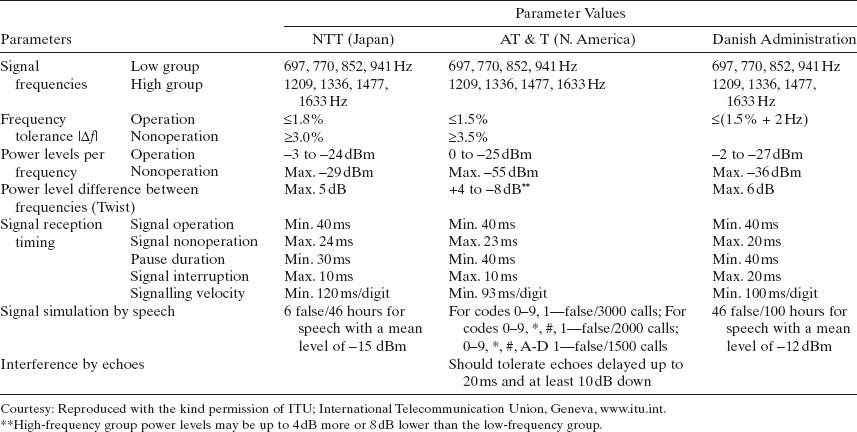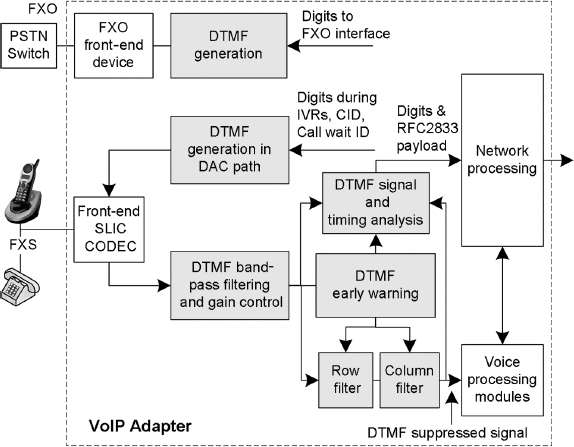7.2 DTMF TONES GENERATION
Telephones generate DTMF tones, and these tones reach the PSTN local switch or VoIP gateway in the microphone path. The foreign exchange subscriber (FXS) interface on the VoIP adapter also generates DTMF tones to the telephone during DTMF caller ID and call waiting caller ID. As shown in Fig. 7.1, the foreign exchange office (FXO) is equivalent to the telephone resident inside the VoIP gateway. FXO interfaces also generate or accept DTMF tones. Almost all modern telephones have a set of mechanical switches (often arranged as a 4 × 4 matrix) interfaced to a microcontroller that scans and debounces these contact closures; however, the microcontroller will have many other functions in addition to DTMF. When a mechanical switch is pressed, it typically “bounces,” which generates a series of open and closed states before settling to the final state. This process typically occurs within 16 to 100 ms of when the button is pressed and needs to be debouched by the microprocessor so that it is not viewed as multiple button presses.
Table 7.2. Values of Multifrequency Push Button Receiving Parameters for Multiple Administrations from ITU-T-Q.24


Figure 7.1. DTMF functional representations in the VoIP Adapter.
DTMF tones are sent on the phone line TIP-RING interface. ...
Get VoIP Voice and Fax Signal Processing now with the O’Reilly learning platform.
O’Reilly members experience books, live events, courses curated by job role, and more from O’Reilly and nearly 200 top publishers.

